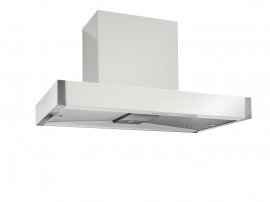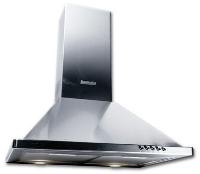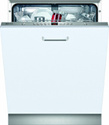Installation Advice & Guide For Cooker Hoods & Extractors
Basic installation requirements for each type of extractor are detailed below:
The standard cooker hood is the most basic type and can be installed as a free-standing unit, or mounted underneath a bridging unit. All standard extractors can be used as extraction or re-circulation devices.

These products are designed to replace a bridging unit as part of a continuous run of units. Generally, the fixings for these extractors allow for some manual alignment both vertically and horizontal to line up exactly with the run of units. When fixing the fascia, care should be taken not to damage the runner mechanism.

Canopy extractors are designed to fit into decorative chimney canopies. When installing these units, allowance should be made on the hinge side of the extractor and space provided for the filter cover to swing down.

Decorative chimney and designer extractors mount in a space between units. Normally, there should be a gap between the edges of the extractor and any adjacent cabinets (50mm is typical). When installing these products, do not silicone to the wall and do not tile the products in; in the event of service being required, the product may need to be removed from the wall.
Electrical Connection
Without exception, all extractors are designed to be connected to a fused spur and protected by a 3A fuse; the use of a 13A fuse can lead to damage in the event of a fault with the product. Note that most extractors are class II protection against electric shock and do not require an earth.
Important!
The isolation switch for any extractor should be accessible after installation. The mains connection should not be made behind any fitted chimney sections unless a separate isolation switch is provided.
Extraction Rates & Venting
Any extractor should be capable of extracting between 6 and 12 times the volume of the room, which can be calculated as Room width x Room length x Ceiling height in metres and then dividing the extraction rate of the product by the volume calculated.
The maximum practical length of ducting is 6m and booster fans may be needed where the effective length is greater than this. When calculating the effective length, assume any 90o bend is equivalent to 1.2m of straight ducting.
Glotech supplies a range of ducting through our EasiDuct range in 125 and 150mm sizes. The greater the ducting size, the more efficient the extractor will run, with lower noise.
Installation Heights When Fitted Above Hobs
When fitting extractors, the main consideration is the clearance height between the extractor and any hob fitted below. There is no minimum legal requirement when installing extractors above electric hobs, but the instructions for use supplied with both hob and extractor dictate the recommended minimum height.
However, when fitting extractors above gas hobs the minimum height stated in the instructions booklets for both the hob and extractor needs to be met. Unless specific exclusions are specified in the extractor instructions then the higher of the heights given in the two instruction booklets must be used. In the case of gas appliances, failure to observe the correct installation requirements may lead to the installation being reported to RIDDOR and may delay any installation sign-off.
Important!
The width of any hob must not be greater than the width of the extractor installed above it. (Cylindrical & lantern style extractors are the only exceptions)
Fixing the Unit to the Wall or Ceiling:
Some products are supplied with generic wall plugs and fixing screws. These may not be suitable for use with the wall or ceiling you wish to fix the product to. Always ensure that you use appropriate fixings. We cannot be held responsible for issues arising from incorrect fitting to support surfaces.
When Using the Extractor as a Re-circulation Device:
It is important to remember that charcoal filters will be required to remove any cooking odours if the extractor is to be used for re-circulation only. Note that these will require periodic replacement (typically between 3 and 6 months).





















